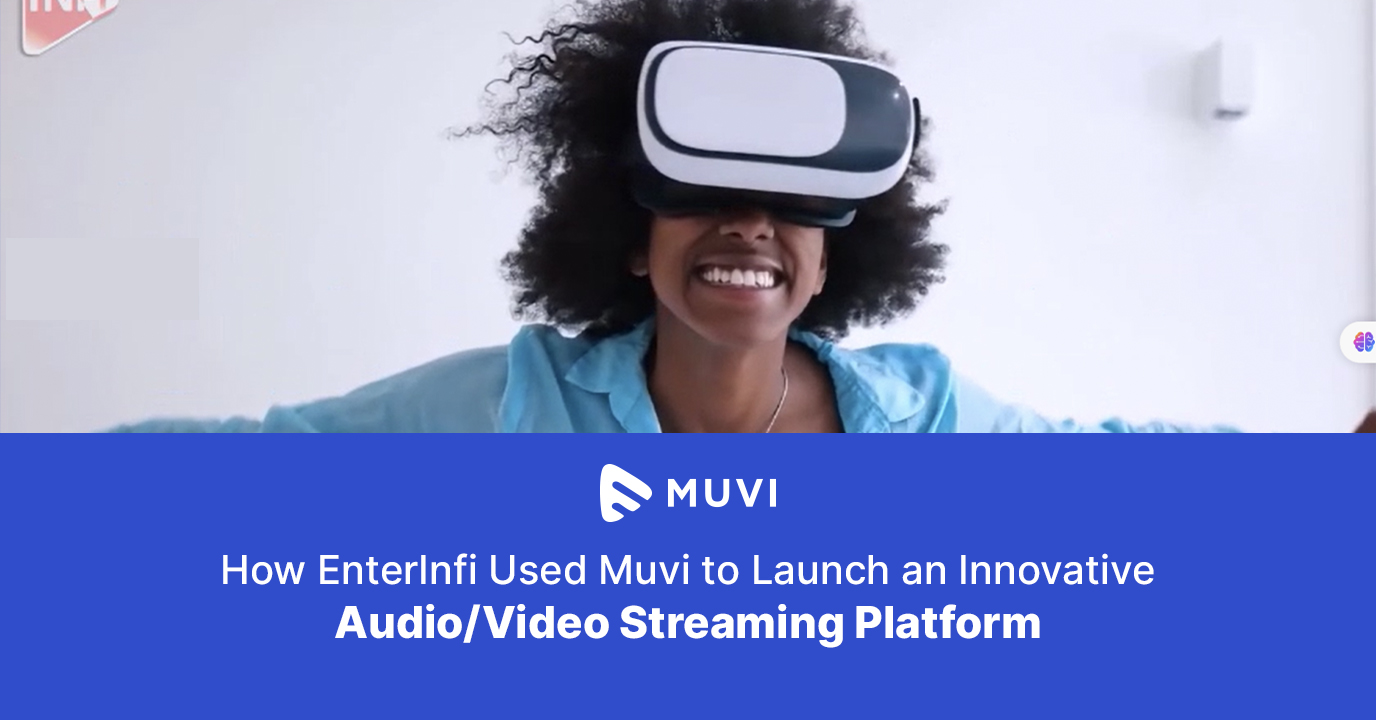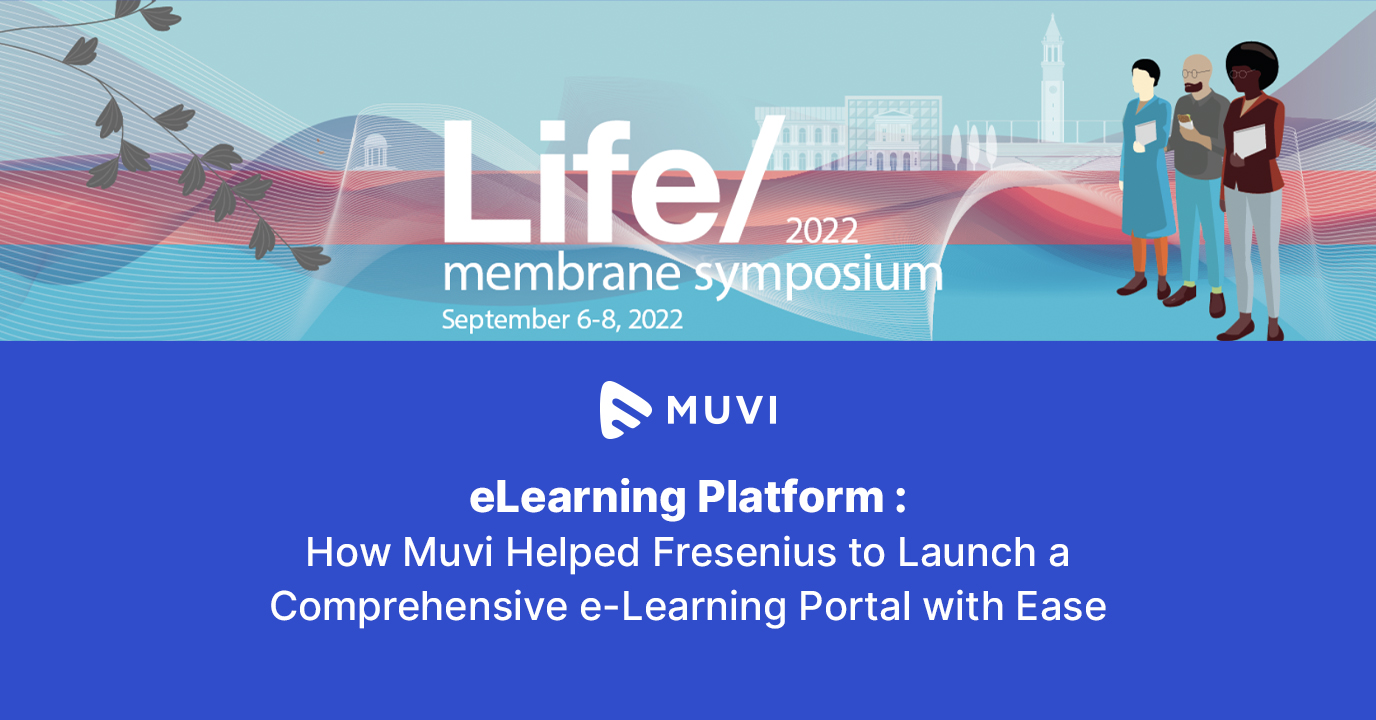Video is the most sought-after utility in the market and rightly so. Its immense potential in marketing, entertainment, education and almost everywhere else makes video one of the most significant types of content consumed online. This immense consumption of video has also made video distribution platforms vulnerable to video piracy, which mandates the deployment of video protection strategies. In this blog, we are going to learn more about how you can protect your videos via video encryption strategies but first let’s have a look at a few statistics that vouch for the immediate need to deploy the best video protection methodologies for your videos.
- According to Thewrap, Digital piracy and illegal streaming services are costing the US economy about $30 billion each year.
- 71,000 jobs are lost in the USA due to online piracy.
- Parks Associates announced by the end of 2027, there will be a cumulative loss to piracy of $113 billion for streaming video providers serving US consumers.
- The international research firm’s latest forecast reveals piracy rates for US streaming services in film and television programming are expected to rise from 22% in 2022 to 24.5% in 2027. In addition, the value of fraudulent advertising delivered online to media and entertainment consumers may exceed $700 million in 2027.
- According to DigitalTVEurope, Streaming services face a $113 billion loss to piracy by 2027.
Video piracy puts a major dent in the economy of any country and the same is reflected in organizations harnessing the power of video for various purposes. Amidst various methods used for video protection, let’s try to understand video encryption, one of the most sought-after and universally accepted methods of ensuring that your content is safe online.
Video Encryption to Video Protection
What is video encryption?
Video encryption is nothing but encoding your video content in such a way that it is only accessible to authorized users by the application of decryption keys as set up by the encoding software and algorithm deployed. Video encryption ensures that the video does not reach the user in its real form as it is much easier to copy or screen record. It is instead transferred in the form of small encrypted fragments that are further decrypted by specialized video players only. This means that such videos cannot be played onto any other player and in order to decrypt it, a user has to have the right decryption method which is player-specific. This serves as a content protection mechanism and prevents unauthorized access. There are several ways to encrypt video which we will be discussing at a later stage in the blog.
Benefits of Video Encryption
Video encryption is one of the few methodologies that serve as the most sought-after ways of video protection. It has numerous benefits like:
Piracy Protection
Video encryption ensures that attempts to copy content are minimized ensuring protection of intellectual property prevents its unauthorized usage.
Sensitive Information Protection
Organizations have sensitive information such as meetings and confidential process videos. While for ease of access, such information has to be online, a data breach in the form of unauthorized access can amount to significant losses.
Controlled Access
Even within an organization, access can be subjective to clearance. Having video encryption deployed means you can give specific access to your video libraries as required.
Better Revenues
By securing content, providers can explore various monetization strategies without fear of unauthorized distribution, including exclusive releases, premium content, and tiered subscription models.
Overall, video encryption is a crucial tool for safeguarding video content, ensuring compliance with legal requirements, and enhancing the security and trustworthiness of video services.

5 Video Encryption Techniques
Video encryption is indeed important for video protection. It has numerous advantages as we saw above but how many types of encryption methods are there? Here is a list of 6 video encryption solutions that are widely accepted in the video streaming industry.
AES 128
AES stands for Advanced Encryption Standard and 128 is the number of bits for key length. It uses the same key for encryption as well as decryption and since it processes the encryption using a 128-bit length encryption key, it is practically immune to most brute-force attacks. It is a very popular means of encryption and is commonly used to secure communication, manage data storage, handle financial transactions, offer DRM for videos, and much more.
AES 128 is often used as part of DRM software to control access to video content. Using cipher block chaining (CBC) or counter mode (CTR), AES 128 cannot guarantee complete security during streaming or transfer, since encryption and the decryption key are the same, its retrieval is possible by experts and thus content might get compromised. Hence it is used as a utility and is used as a part of other encryption technologies.
HLS E
HLS as we all know is one of the most popular live-streaming protocols that is developed and managed by Apple. HLS being open-sourced is widely accepted by all types of browsers and players.
HLS is mainly used for live streaming of content and HLS E refers to the encryption of such live streams that are often managed using a combination of AES 128 encryption technology. Videos are divided into smaller segments particularly 10 seconds long which also allows for adaptive bitrate streaming. Additionally, HLS deploys M3U8 playlist files that list URLs to these video segments. Of all the URLs, one of those directs towards the encryption key that is used to decrypt live streams.
In this way, the end user gets access to secured live streams. However, just like AES 128, securely managing and distributing encryption keys is critical but can be challenging. If keys are not managed properly, it could lead to unauthorized access or loss of content security.
DRM-Enabled Video Encryption Techniques
Both encryption methods discussed above are prone to attacks where the security of encryption keys is always at risk. Cyber attacks can often stream such keys and result in the downloading of the content. Various downloader software are easily able to download such videos encrypted using these techniques and therefore these are never 100% secure.
To solve this problem, DRM or digital rights management software was introduced. Digital Rights Management (DRM) is a set of technologies and strategies used to control the access, usage, and distribution of digital content. It ensures that only authorized users can access and use digital media such as videos, music, e-books, and software. DRM works via licensing which is the basic set of rules that are delivered to apps and browsers and based on it, decryption works.
It has improved key management where decryption keys are securely managed and distributed based on dynamic user authentication and licensing conditions. There are 3 most popular DRM licensing tools developed by Google, Apple, and Microsoft, namely Widevine, FairPlay and PlayReady These universally manage data protection for clients globally and due to the vastness of its use, they are the most trusted and globally accepted ways to protect content.
Google Widevine
Developed and managed by Google, it is one of the most sought after methods of encryption methods that provide content protection support across multiple web browsers, mobile devices, television sets, and more. The worldwide compatibility of Google’s Widevine and the dominance of Google-developed devices and ecosystems means that Google Widevine finds its presence globally and is a major inclusion in any reputed video streaming software or service.
It offers 3 different categories of security. Starting with L3, here decryption and processing happens inside the software outside of the hardware environment. This means there is no specific hardware required for its implementation. Next comes L2 and L1 which process information in a secured TTE layer within the device. Both of them are not software-only options and require the deployment of key hardware components.
Advantages of Google Widevine
- Major streaming platforms such as Netflix and Prime Video use Widevine to protect their content.
- Google-backed globally accepted encryption technology.
- Widevine integrates smoothly with existing streaming workflows, supporting adaptive bitrate streaming and various encryption standards.
WIdevine is indeed one of the most widely accepted video encryption methods, often to utilize its full potential, it demands high processing power, and often low-end smartphones do not support its best offering which is L1.
Apple Fairplay
As the name suggests, Apple’s Fairplay has been developed by Apple and is primarily used with Apple’s ecosystem of devices, web browsers, and other applications. Since Apple makes its hardware and software, Apple Fairplay is extremely optimized for Apple devices and seamlessly integrates with the very famous Apple Ecosystem.
When a user purchases or rents FairPlay-protected content, they receive a license containing the decryption key and usage rules. This license is managed by Apple’s infrastructure. It supports both live as well as on-demand content.
Advantages of Apple Fairplay
- The deep integration with Apple’s ecosystem ensures a seamless user experience, with easy access to purchased and rented content across all Apple devices.
- Apple’s hardware can manage large-scale distribution of content.
Apple Fairplay is one of the most efficient content encryption and protection technology. However, it has platform restrictions as it is very difficult to deploy for any non-apple devices. Also implementing Apple’s DRM is very complex and requires stringent measures to be followed.
Microsoft PlayReady
Microsoft PlayReady is a DRM solution offered by Microsoft for content protection and its safe distribution. It provides similar benefits to FairPlay and Widevine. Microsoft PlayReady offers a range of advanced features including Metering, Domains and Domain-based licenses, Breach Response, and Key Rotation for Live streaming. PlayReady version 4 includes support for Common Encryption (CENC) based encryption using either AES-CTR or AES-CBC encryption modes.
It supports devices such as the entire Windows ecosystem, Xbox and PlayStation, Android, iOS, Smart TVs, and more. If you are looking to broadcast your videos to Microsoft-owned devices, PlayReady can be a good option.
Store & Distribute Your Videos with Muvi Flex
Have a lot of videos to store but concerned about its security online? Leave all your worries to Muvi Flex, the world’s best video hosting and sharing platform that lets you seamlessly host, embed, share, and manage your videos with enterprise-grade security.
Built on Amazon CDN, Muvi Flex supports multiple video streaming formats on its fully customizable feature-rich online video player. What’s more? Now you can deploy VMAP ads onto the player and get yourself a separate source of revenue.
If DRM is your priority requirement, Muvi Flex comes with Multi-DRM support comprising Apple’s Fairplay, Microsoft’s PlayReady, and Google’s Widevine ensuring content protection on almost all ecosystems. Additionally, utilizing the best of all, Muvi Flex gives you the best of unauthorized access prevention, encryption, and privacy protection for your videos. That’s not all, FLex offers server side security, SSL certificates, international compliances, and more to ensure the security of your videos.
Get a free 14-day trial to learn more.
FAQs
Video encryption refers to the encoding of a video file before streaming it to the end user with specific keys and other technologies to ensure that unauthorized access is avoided and content is protected.
DRM or digital rights management is a consolidated set of tools that manages video encryption, its license management and secure exchange between the server and the end user. DRMs are deployed to protect data from unauthorized access.
Choosing the best encryption method depends on various factors, including the specific use case, the level of security required, and the resources available. Globally, DRMs provided by Google, Microsoft, and Apple are known to have the best encryption as they offer a complete package for data protection, delivery, and license management.

















Add your comment